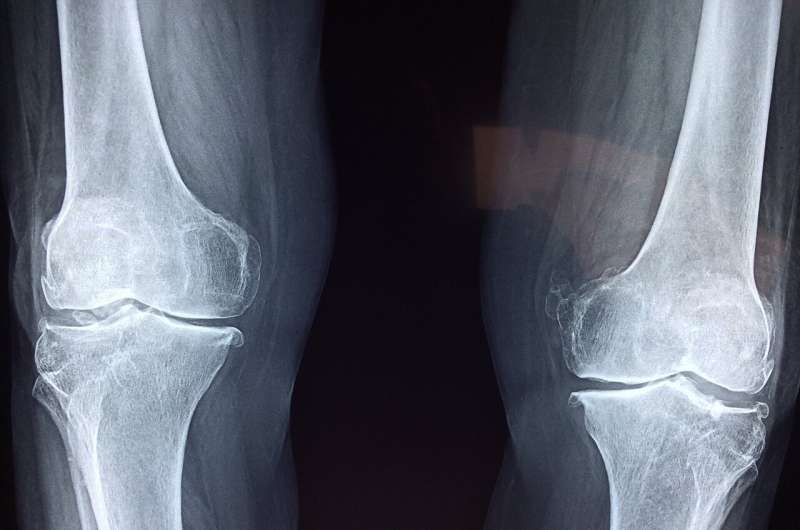Cartilage matrix as natural biomaterial for cartilage regeneration

Just a few millimeters thick, articular cartilage plays a crucial role in our musculoskeletal system, since it is responsible for smooth (in the truest sense of the word) movement. However, the downside of its particular structure is that even minor injuries do not regenerate. Timely treatment of cartilage damage is therefore essential. Biomaterials are often used to support the cells, their distribution and protection. In most cases, this treatment significantly improves the patient's clinical symptoms but fails to fully restore the cartilage to its original state. The working group led by Sylvia Nürnberger (MedUni Vienna's Department of Orthopedics and Trauma Surgery) develops strategies for regeneration and has found that natural cartilage matrix is suitable as a biomaterial for improved cartilage regeneration.
Articular cartilage damage worsens over time and, if left untreated, leads to arthritis of the entire joint. Timely treatment of cartilage damage is therefore essential. In the case of extensive injuries, surgery is the best option. This involves cartilage cell implants or stem cell activation to provide the damaged tissue with the cells it requires to regenerate cartilage. Biomaterials are often introduced to support the cells, their distribution and protection. In most cases, this treatment significantly improves the patient's clinical symptoms but fails to fully restore the cartilage to its original state.
Supporting endogenous cells with a donor matrix
In order to bring about a long lasting improvement in the regeneration process, Nürnberger's orthopedic trauma-surgery working group, in collaboration with the Ludwig Boltzmann Institute for Experimental and Clinical Traumatology in the AUVA Trauma Research Center, harnesses the potential of the natural cartilage matrix to create an optimal environment for cartilage cells or stem cells. To this end, a project financed by the Austrian Research Promotion Agency FFG (also involving Vienna University of Applied Sciences and the Erasmus Medical School Rotterdam) has developed techniques for processing donor cartilage obtained, for example in the course of routine operations, in several steps.
In order to facilitate the repopulation with the patient's own cells, the donor cells were first of all removed. "This leaves a very dense matrix, into which the patient's cells are unable to migrate. Opening up the matrix proved to be the technological challenge in this development, and this was achieved by means of laser engraving. This enabled us to make extremely fine incisions in a controlled and standardized way, so that even deeper regions of the tissue were accessible to regenerative cells," explains Nürnberger. "The material that was developed, largely resembles the original cartilage in terms of structure and composition and can therefore serve as a component of the regenerative tissue, thereby assisting the process or tissue formation."
These properties distinguish the newly developed material "CartiScaff" from previous approaches and also give reason to hope that faster and more sustained regeneration can be achieved. Preclinical studies have already shown that CartiScaff promotes the formation of new cartilage tissue. As part of an FFG-funded follow-up study, the material is currently being tested in preclinical experiments to determine its performance under natural load conditions. It is hoped that, in future, the new biomaterial, CartiScaff, can be used in combination with existing surgical techniques and the range of conventional treatments can be expanded and improved.
More information: S. Nürnberger et al. Repopulation of decellularised articular cartilage by laser-based matrix engraving, EBioMedicine (2021). DOI: 10.1016/j.ebiom.2020.103196



















